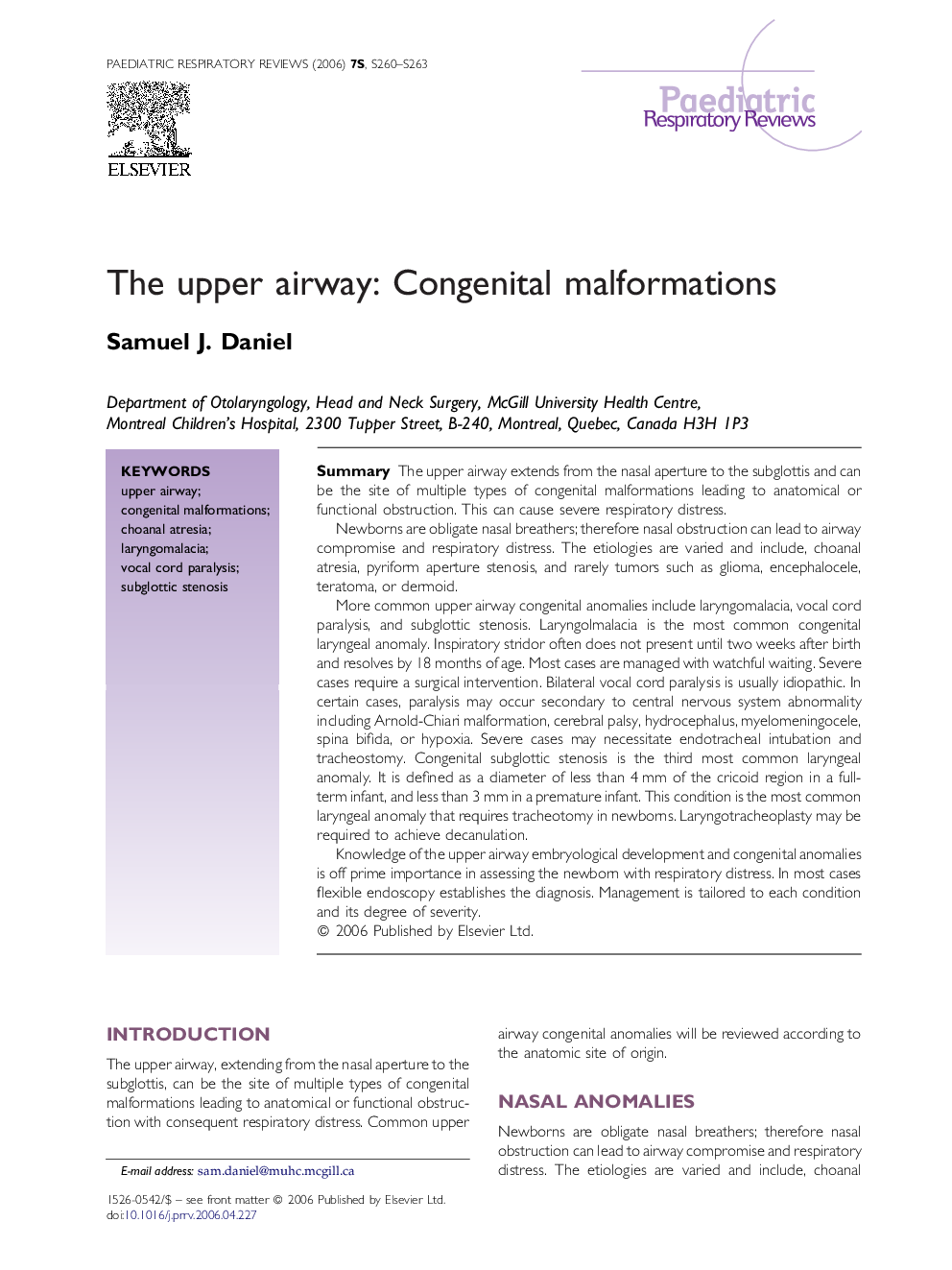| کد مقاله | کد نشریه | سال انتشار | مقاله انگلیسی | نسخه تمام متن |
|---|---|---|---|---|
| 4171848 | 1275680 | 2006 | 4 صفحه PDF | دانلود رایگان |

SummaryThe upper airway extends from the nasal aperture to the subglottis and can be the site of multiple types of congenital malformations leading to anatomical or functional obstruction. This can cause severe respiratory distress.Newborns are obligate nasal breathers; therefore nasal obstruction can lead to airway compromise and respiratory distress. The etiologies are varied and include, choanal atresia, pyriform aperture stenosis, and rarely tumors such as glioma, encephalocele, teratoma, or dermoid.More common upper airway congenital anomalies include laryngomalacia, vocal cord paralysis, and subglottic stenosis. Laryngolmalacia is the most common congenital laryngeal anomaly. Inspiratory stridor often does not present until two weeks after birth and resolves by 18 months of age. Most cases are managed with watchful waiting. Severe cases require a surgical intervention. Bilateral vocal cord paralysis is usually idiopathic. In certain cases, paralysis may occur secondary to central nervous system abnormality including Arnold-Chiari malformation, cerebral palsy, hydrocephalus, myelomeningocele, spina bifida, or hypoxia. Severe cases may necessitate endotracheal intubation and tracheostomy. Congenital subglottic stenosis is the third most common laryngeal anomaly. It is defined as a diameter of less than 4 mm of the cricoid region in a full-term infant, and less than 3 mm in a premature infant. This condition is the most common laryngeal anomaly that requires tracheotomy in newborns. Laryngotracheoplasty may be required to achieve decanulation.Knowledge of the upper airway embryological development and congenital anomalies is off prime importance in assessing the newborn with respiratory distress. In most cases flexible endoscopy establishes the diagnosis. Management is tailored to each condition and its degree of severity.
Journal: Paediatric Respiratory Reviews - Volume 7, Supplement 1, 2006, Pages S260–S263